 In the golden years of life, one's perspective becomes a cherished companion, guiding the way through memories and new experiences. The importance of perspective for senior citizens cannot be overstated. It can shape the quality of their lives, influence well-being, and contribute significantly to a fulfilling and joyous retirement. In this blog, we'll delve into the significance of perspective for seniors and explore how cultivating a positive outlook can enhance their overall happiness and life satisfaction.
In the golden years of life, one's perspective becomes a cherished companion, guiding the way through memories and new experiences. The importance of perspective for senior citizens cannot be overstated. It can shape the quality of their lives, influence well-being, and contribute significantly to a fulfilling and joyous retirement. In this blog, we'll delve into the significance of perspective for seniors and explore how cultivating a positive outlook can enhance their overall happiness and life satisfaction.
The Power of Perspective
As individuals age, they often encounter changes in health, lifestyle, and social dynamics. These shifts can be challenging, but the lens through which these changes are viewed can make all the difference. Rather than focusing solely on limitations, a positive perspective allows seniors to see opportunities for growth, adaptation, and continued engagement with life. This shift fosters resilience and a proactive approach to navigating the evolving landscape of aging.
Cultivating Gratitude
Gratitude has the transformative ability to elevate one’s perspective at any age. For seniors, reflecting on a lifetime of experiences and expressing appreciation for the lessons learned and relationships forged can bring profound fulfillment. Embracing gratitude allows seniors to recognize the richness of their journey, promoting a positive outlook that positively impacts mental and emotional well-being.
Tips for Practicing Gratitude:
- Keep a gratitude journal, noting daily positives.
- Share stories of meaningful moments with friends or family.
- Engage in community service, giving back can enhance feelings of gratitude.
Finding Purpose in Retirement
A positive perspective instills a sense of purpose, a vital element for seniors entering retirement. Whether through volunteer work, pursuing hobbies, or spending quality time with loved ones, maintaining a sense of purpose contributes to a meaningful life. By viewing retirement as an opportunity for new beginnings rather than an endpoint, seniors can embark on this chapter with enthusiasm and renewed passion.
Nurturing Social Connections
The importance of social connections for seniors cannot be emphasized enough. A positive perspective enhances the quality of these relationships, fostering community and mutual support. Engaging with friends, family, and the broader community provides opportunities for shared experiences, laughter, and emotional well-being. By valuing social connections and maintaining an open-minded perspective, seniors can combat feelings of isolation and cultivate a rich tapestry of relationships.
Embracing Change
Life is dynamic, and adapting to change is a constant reality. Seniors who approach change with a positive perspective are better equipped to navigate challenges, whether it’s adjusting to a new living arrangement, embracing technology, or adapting to changing health conditions. A flexible and optimistic mindset allows seniors to face transitions with resilience and grace.
The Power of Mindfulness
In the later years of life, mindfulness becomes a powerful tool for staying present and savoring the richness of each moment. By cultivating awareness and living in the present, seniors can appreciate the beauty in small, everyday experiences. This mindful perspective fosters gratitude for the simple joys that make life meaningful.
A New Dawn of Possibilities
As the sun sets on one chapter of life, a new dawn emerges, filled with possibilities. The importance of perspective for seniors lies in its power to shape their narratives. A positive outlook not only enhances emotional well-being but also opens doors to a life filled with purpose, gratitude, and meaningful connections.
Embrace your golden perspective! Reflect on your journey, share your stories, and engage with your community. Remember, it’s never too late to shift your outlook and discover the beauty of this stage of life.
By navigating the complexities of aging with resilience, grace, and an enduring zest for life, seniors can truly thrive.


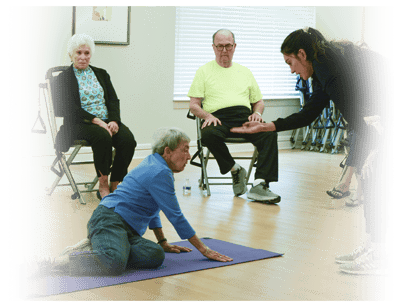 Fall prevention programs and services have been a cornerstone of
Fall prevention programs and services have been a cornerstone of 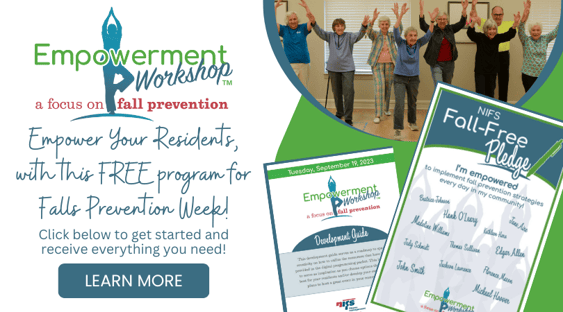
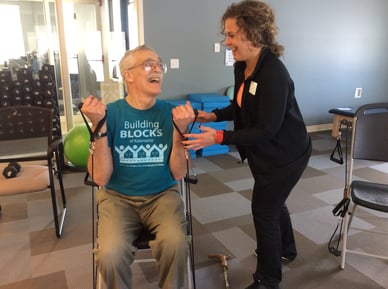 One of my favorite things about my job is when I have the opportunity to visit our client sites and spend time with our staff. Not only are these team members exceptionally knowledgeable and creative in developing fitness offerings for active older adults, but their passion to serve their clients and residents never ceases to amaze me. I think this is what truly differentiates the service NIFS provides from a traditional contractor partnership—how our staff members become one of the team and integrate so seamlessly with the community’s staff and vision.
One of my favorite things about my job is when I have the opportunity to visit our client sites and spend time with our staff. Not only are these team members exceptionally knowledgeable and creative in developing fitness offerings for active older adults, but their passion to serve their clients and residents never ceases to amaze me. I think this is what truly differentiates the service NIFS provides from a traditional contractor partnership—how our staff members become one of the team and integrate so seamlessly with the community’s staff and vision.
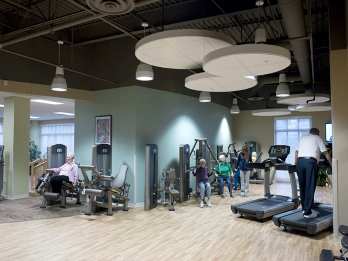 Picture this: You are 78 years old touring a senior living community with the marketing and sales coordinator. They take you to the ground floor or basement of the building and they flip on the lights of the uninhabited fitness center. It has painted cinderblock walls, fluorescent lights, no windows, and a hodgepodge of equipment. It feels deserted and you wonder how active the community is.
Picture this: You are 78 years old touring a senior living community with the marketing and sales coordinator. They take you to the ground floor or basement of the building and they flip on the lights of the uninhabited fitness center. It has painted cinderblock walls, fluorescent lights, no windows, and a hodgepodge of equipment. It feels deserted and you wonder how active the community is.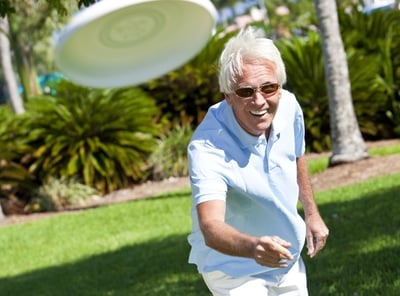


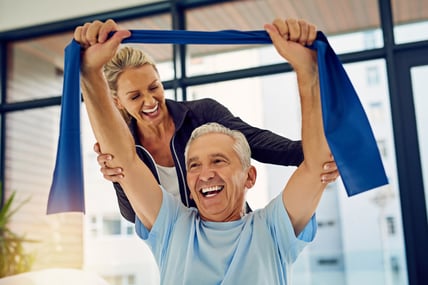


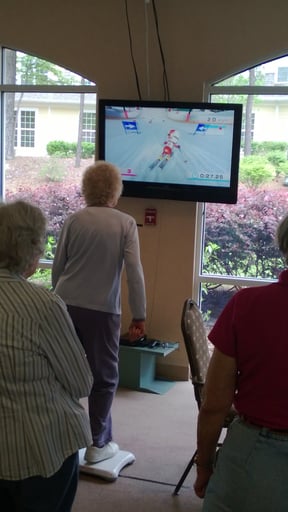 Twenty years ago, if someone had suggested purchasing video games for a retirement community, they would have been laughed at. “Those are for kids,” would have been the response. “No one over 60 is ever going to be interested in that.” I’m here to tell you times have changed! Now, everywhere you look people of all ages are getting in on the action and testing their skills in the virtual world.
Twenty years ago, if someone had suggested purchasing video games for a retirement community, they would have been laughed at. “Those are for kids,” would have been the response. “No one over 60 is ever going to be interested in that.” I’m here to tell you times have changed! Now, everywhere you look people of all ages are getting in on the action and testing their skills in the virtual world.
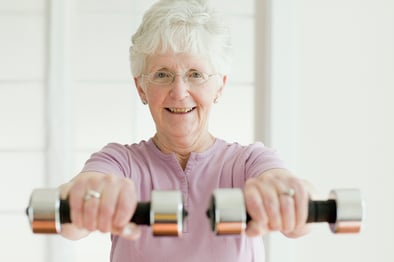 With exercise showing benefits such as improved balance, increased total-body strength, improved cognition, and reduction of chronic illness, it is difficult to understand why people would not exercise. However, there are two reasons why I think this “too much, too soon” judgment could arise in senior fitness:
With exercise showing benefits such as improved balance, increased total-body strength, improved cognition, and reduction of chronic illness, it is difficult to understand why people would not exercise. However, there are two reasons why I think this “too much, too soon” judgment could arise in senior fitness: 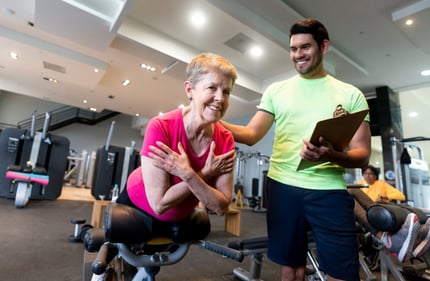 While the size and shape of fitness spaces can vary dramatically from one senior living community to the next, it is very common for there to be at least some dedicated space with exercise equipment for resident use. It’s also quite common for communities to offer group exercise classes as part of the activity program. In some cases, communities also offer a personal training service.
While the size and shape of fitness spaces can vary dramatically from one senior living community to the next, it is very common for there to be at least some dedicated space with exercise equipment for resident use. It’s also quite common for communities to offer group exercise classes as part of the activity program. In some cases, communities also offer a personal training service.